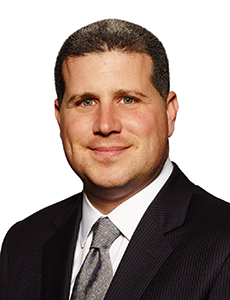Leaders in Action
2015 Insurance Executives to Watch

Downward pressure on pricing, increased capacity in the market and the continuing inadequacy of returns on investments are some of the challenges that must be navigated by insurance industry executives in 2015.
Such difficulties are exacerbated by the still-fragile economies of the United States and worldwide, and the continuing threats of political turmoil and climate change in many parts of the globe.
Some of the business leaders we have selected for this annual feature — such as Tom Lawson at FM Global, Ben Walter at Hiscox USA and Peter Hancock at AIG — are taking on responsibility for their entire company.
Other senior insurance executives we’ll be watching in the coming year are taking on significant new responsibilities or have key leadership roles to play in lines of business or business sectors such as cyber, property, specialty or micro-business.
As we all know, along with any challenge comes the opportunity for growth. These insurance executives will bear watching not only for the aplomb with which they will handle their new responsibilities, but for the paths they pave to broader industry opportunities.
A Brand That Resonates
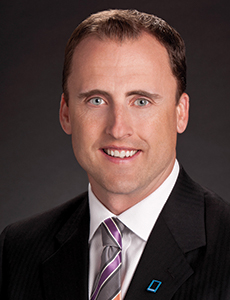 Mark Berven
Mark Berven
President and COO
Nationwide P&C Agency Operations
Nationwide Insurance
Nationwide has embarked on the daring venture of an organizational strategy shift — and Mark Berven will be the executive to make sure it works.
In addition to a rebranding campaign, the company has restructured — with Berven overseeing one of three corporate divisions: the Nationwide Property & Casualty Operations business unit.
The shift puts all P&C and personal and commercial lines operations under the Nationwide brand, from a half-dozen operations including Harleysville Insurance, Allied Insurance, Scottsdale Insurance, Crestbrook Insurance and Titan Insurance.
“You have to have a brand that resonates,” he said. “With all of the noise in the system, consumers look for those trusted brands. … We have also heard loud and clear from our distribution partners their desire for a brand they can stand behind.”
The change is designed to “operationalize a unique brand;” streamline operations and efficiencies so customers see more competitive products and pricing, innovation and support services; and deliver enterprise solutions to customers encompassing the insurer’s diverse portfolio of offerings that ranges from property & casualty and the well-known personal auto, homeowners and commercial coverage to banking, specialty health and farm insurance.
Berven, who started with the company 22 years ago on the independent distribution side, said his new role gets him back into the field listening to partners and “sharing a vision of where we are going.”
“It’s been really well received,” Berven said of the rebranding effort, and it leaves the company well-positioned to provide growth and positive returns in a softening market.
“If the barometer of our success is the reaction of our distribution force in regard to their excitement about this, we have some really good times ahead,” he said.
Small is Beautiful
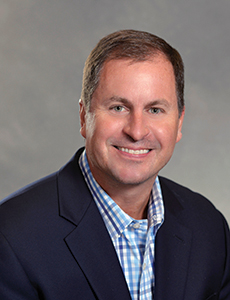 Dave Charlton
Dave Charlton
Division President
ACE Property & Casualty Micro-business Division
ACE Commercial Risk Services
Everyone is busy, it seems, but ACE’s Dave Charlton just might be busier than most. ACE tapped Charlton for his small business and specialty lines expertise in March to head up a new division that will focus on micro-business, which the carrier defines as businesses under $2 million in revenue with less than 50 — in most cases less than 25 — employees.
Since joining ACE, Charlton has been aggressively hiring staff with both admitted and nonadmitted experience. He is also taking advantage of an equally aggressive push by ACE to bring technology to bear in ways that will help insureds better understand their risks and coverage options.
ACE’s approach will at the same time take into account the different ways brokers will want to look at and bind business.
“We are putting in a whole new IT system and I have had a lot of support from the infrastructure ACE has from legal to filing,” Charlton said during a November interview with Risk & Insurance® at ACE North America’s headquarters in Philadelphia.
“That is one of the reasons I signed on,” Charlton said.
A key approach for ACE is offering small business owners a business owners policy or BOP — typically comprising general liability and property coverage — and a second phase of coverage, errors and omissions or D&O, for example, all under one policy.
In the past, micro-business owners had to go to the trouble of understanding and buying two different policies if they wanted or needed that much coverage.
“On a $2,000 transaction, do you really want to go to two places with that?” Charlton asked.
Look for Charlton’s division to be coming out in the first quarter of 2015 with a “standard” BOP, specialty commercial lines coverage, coverage for stand-alone bars and restaurants, and coverage for nonprofits including nonprofit D&O coverage.
“It’s been fun to bring this team together,” Charlton said.
Making Cyber Risk a Global Priority
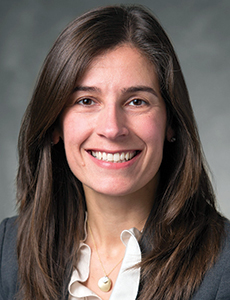 Tracie Grella
Tracie Grella
Global Head of Professional Liability
AIG
Tracie Grella, global head of professional liability, has taken cyber coverage to a new level.
She and a team of actuaries, underwriters and claims managers developed CyberEdge PC, a cyber risk product that covers property damage and bodily harm caused by a cyber attack.
AIG first developed coverage for cyber risk back in the 1990s, but with each and every day bringing news of a new data breach, Grella has worked aggressively on ways to protect insureds.
Released earlier this year and already offered in 47 countries, the coverage has garnered a “great deal of interest” from brokers, she said, because it addresses an exposure often overlooked by traditional cyber, general liability or property policies.
“The need is growing, but organizations still don’t understand what their exposure is, how to evaluate it, and how much they want to transfer to insurance,” she said.
She also strives to raise awareness about cyber security through speaking at events around the globe, and through the creation of the CyberEdge mobile app, which provides the latest news regarding cyber threats and regulatory changes, as well as a global cyber breach map and a breach cost calculator.
Promoting the product globally has been a challenge because it reaches across multiple disciplines and addresses an exposure that can be hard to identify.
Grella embraced that test by calling on the expertise of over 200 underwriters worldwide, vendor partnerships, and the support of various industry groups to educate company leaders and brokers about the product — a goal she will continue to pursue in 2015.
Room to Run
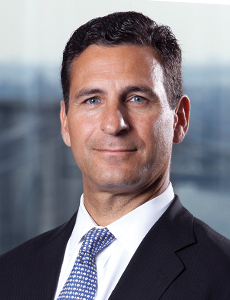 Lou Iglesias
Lou Iglesias
President
Allied World North America
Specialty insurer Allied World was in a period of accelerated growth, led by Gordon Knight, then-president of the company’s North American division, when Lou Iglesias joined the company as president of the P&C division in 2012.
In 2014, Knight retired, having doubled the size of the company’s U.S. operations during his brief tenure.
That left some rather large shoes to fill for Iglesias, who was tapped to succeed Knight. Iglesias is energized by the challenge, though, and has no intention of allowing the company’s momentum to slow.
“We’re in a really fun and interesting phase in the growth of our company,” said Iglesias. “We have a tremendous amount of room to run.”
Allied World’s gross premiums written were $707.9 million for the third quarter of 2014, a 22 percent increase, compared to the third quarter of 2013. The U.S. insurance segment grew by 25 percent, led by nearly 43 percent growth in general casualty.
In October, Allied World announced a significant realignment of its two insurance business segments, giving Iglesias responsibility for all insurance lines of business of the Bermuda operation, while continuing to oversee production and profitability for Canada and all U.S. branch offices.
Iglesias said that getting the company’s underwriting expertise out into the field — “closer to our clients and closer to our brokers” — remains a key focus.
He also wants to identify and develop that expertise, he said.
“I believe in empowering people and giving them enough room to succeed,” he said. “I think that’s how you get the best people and keep the best people.”
A Unifying Mission
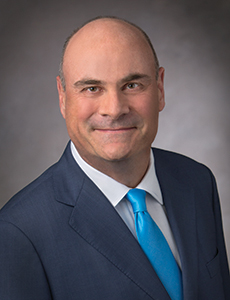 Peter Hancock
Peter Hancock
President and Chief Executive Officer
AIG
Peter Hancock took over as CEO of AIG on Sept. 1, and has already made strides in steering the course of AIG’s future. Hancock’s vision is an ambitious one, reshaping management to drive unification, on a mission to create “One AIG.”
“My goal was to create a simpler organization where we will most effectively embrace the diversity of skills across our organization, and then put those skills to work for the good of our customers,” said Hancock. The new structure, he said, will allow the company to tap into opportunities that might be overlooked under a more siloed approach.
Hancock previously served AIG as CEO of its property/casualty division and as executive vice president of finance, risk and investments. Building on that experience, Hancock is emphasizing the use of data in all decisions, whether in product development, marketing, pricing, customer selection, behavior analysis or overall optimization of portfolios. He’s investing heavily in science and engineering with the idea that the carrier can cut out fraud and waste, increasing profits.
“I see innovation and an embrace of technology as being integral to the development of AIG and the industry going forward,” said Hancock. “The tepid recovery following the Great Recession in advanced economies has pushed insurers, including AIG, to focus on innovation, with nimble operating models and growth strategies; big data to seek effective pricing strategies; and shifts in trends, be it consumer behavior or business models.”
AIG recorded total revenues of $16.65 billion for the three months ended Sept. 30 this year, compared to $15.94 billion for the comparable period last year. Premiums for the quarter were $9.45 billion, up from $9.35 billion in Q3 2013.
To continue driving performance upward, the CEO’s mantra for the property/casualty business is value over volume, and he plans a broader implementation of value-based metrics at AIG.
Explained Hancock, “We want to keep focusing on our true north: where the value is greatest to our customers.”
Stability and Success
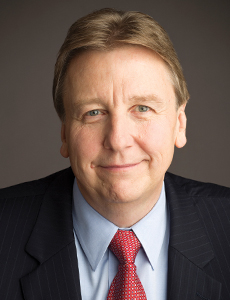 Thomas Lawson
Thomas Lawson
President
FM GLOBAL
Tom Lawson began 35 years ago at commercial and industrial property insurer FM Global as a loss prevention engineer, his first job out of college. In January, he takes the helm as CEO.
And how appropriate is it that a property risk engineer is the new leader of a mutual organization so well known for its scientific and engineering advancements in the area of property loss prevention?
Under retiring CEO Shivan Subramaniam, the insurer grew from $1 billion in annual revenue in 1999 to $5.6 billion in 2014.
“I do have big shoes to fill,” Lawson said. “Luckily for me, I have a great role model.”
He has no giant steps planned for those shoes at the moment.
“We have a long tradition of stability and success,” Lawson said. “Going forward, that won’t change. Our vision and values are going to remain the same.”
While downward pressure on pricing will keep the market competitive, the company’s focus on using predictive analytics, addressing emerging risks and its “highest client retention rate in the industry” put the company in good stead, he said.
“We are focused on making sure we deliver competitive products and services,” he said. “Through a research and engineering focus, we always aim to come up with solutions to property risk questions before clients ask.”
One “good example of where we are heading with analytics,” he said, is the FM Global Resilience Index, which provides a drilled-down look at supply chain disruption risk and resilience in nearly 130 countries.
“I am extremely excited about the future. Next year will mark our 180th year serving clients. FM Global has a great history of success and I am looking forward to making sure that continues.”
Decentralized Authority
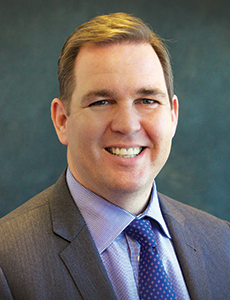 Christopher Leisz
Christopher Leisz
SVP, Chief Underwriting Officer for Specialty
CNA
Specialty lines, especially management liability, financial institutions, professional services and health care, are becoming more in demand as insureds see increased regulatory pressure due to such disparate reasons as the Affordable Care Act, SEC investigations and legal M&As, just to name a few.
It is in this atmosphere that Chris Leisz has taken on a new and significant leadership position at CNA, with the responsibility for the underwriting strategy for the specialty lines of business.
“I am not trying to effect a major change,” he said. “I just want to help tweak and refine the things they are doing.”
But putting the bulk of underwriting authority at the branch level might be considered more than a tweak.
Since he started at the company in February, Leisz has worked to empower a decentralized underwriting structure that has a strong customer segment focus. As a whole, CNA has streamlined into a more specialized business insurer that focuses on specific industries, which it calls “customer segments.”
Leisz said the decentralized approach not only strengthens relationships and gives customers faster responses, but it also aids cross-selling of products.
“I am committed to getting authority out to the field,” he said. “It’s an evolution,” requiring new tools, a training curriculum and consensus-building.
“I enjoy getting everybody on board,” Leisz said. “When it’s everyone sharing it, it becomes part of your DNA. When it’s one person doing it, it raises a big disconnect.
“You have to understand the strategic and cultural changes so you can maintain focus and move the decisions forward,” he said.
Even with overcapacity in the market, insurers will see exposure growth due to a strengthening economy, he said.
“We bid in some of the more volatile parts of the industry when it comes to specialty lines,” Leisz said. “It’s an extremely competitive environment.”
Bringing Value to Clients
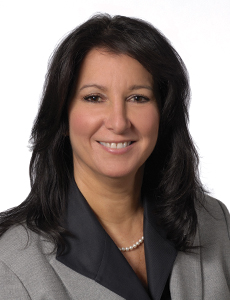 Michele Sansone
Michele Sansone
President
XL North America Property
Michele Sansone has made her mark at XL for the past three years, serving as chief underwriting officer and helping XL’s North America Property business more than double its book of business.
She was appointed in May as president of XL’s North America property insurance business, and now directs XL Group’s property underwriting activities, including general property and energy property business across the U.S., Canada and Bermuda.
Sansone has also been appointed head of global risk engineering (XL GAPS), overseeing a global network of risk engineers who provide on-site property risk analysis and support clients’ property loss prevention programs.
“Our risk engineering, especially, brings a lot of value to the table,” said Sansone. “It’s not just about writing a property policy. We’re really trying to help our clients stave off loss but also keep their operations safe and reliable.
“Going forward, we want to help more clients reap benefits of our risk analysis legwork. The information is too valuable just to be left alone until the next renewal.”
While increased capacity presents an ongoing challenge across the property/casualty market, Sansone said, XL’s competitive edge will continue to fuel growth, backing up its capacity with industry experience and the property risk management guidance clients need.
“It’s not all about the financial protection offered by the insurance contract,” she said. “It’s also about other ways we help our clients avoid loss and quite simply, run safer operations that put their equipment, their employees and their customers at less risk.”
Achieving Growth Through Team Building
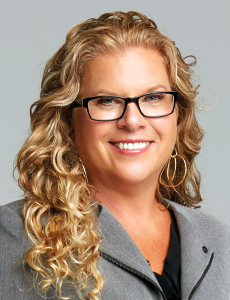 Lorraine Seib
Lorraine Seib
President
Global Excess Casualty
XL Group
Since becoming president of XL Group’s global excess casualty business three years ago, Lorraine Seib has been tasked not only with growing the business, but also molding its three access points — Dublin, Bermuda and North America — into one unified team.
“Before I came on board, they kind of operated in silos, and even competed against each other for the same North America base of customers,” she said. “You have to have a cohesive team to be successful.”
Seib held all-employee meetings to bring her roughly 60 team members together, allowing them to bond and form the collaborative relationships that have been so vital to XL’s growth.
The excess casualty business is currently one of the company’s most profitable, with about $380 million in gross written premium. Seib plans to bring that up to $500 million within a few years, focusing on the upper middle market in North America.
“There’s a huge growth opportunity there, because historically we haven’t played there before,” Seib said.
For the coming year, she will focus on adding local talent to existing teams in Dallas; Kansas City, Mo.; Atlanta; and Exton, Pa.
In addition to technical capabilities, Seib wants her team to have strong local relationships.
“Brokers want to deal with a person they know who has handled their account for years,” she said. “I don’t have one person on my team who isn’t running on all cylinders, and I’m very proud of that.”
Encouraging Courage
Ben Walter is proving that you don’t need decades of experience in the insurance business to make an impact.
Walter, a Kellogg School of Management MBA and a former managing director of BlackRock, joined Hiscox in 2012, and is engineering a rapid expansion in the United States for the Bermuda-based specialty insurer.
Revenue for Hiscox USA is up 25 percent year over year, and the company is continuing to hire, growing from 175 employees when Walter took over to more than 300 currently.
The company made a bold move in 2010, becoming the first in the U.S. to offer insurance to small business directly through Internet sales. Hiscox USA is now licensed to sell insurance directly to small businesses in 40 states and plans to be completely national in that regard in a couple of years.
The company already operates in all 50 states through more standard channels.
“We’ve focused on the states with the most opportunity and our products are now available to nearly 90 percent of all U.S. small businesses,” Walter said to Risk & Insurance® in November.
“I really believe we punch above our weight on the marketing side,” Walter said, in responding to the observation that Hiscox was a relative unknown here five years ago.
“Three years ago we produced a web series about small business that had over 11 million views across two seasons.”
A big initiative for Walter and Hiscox USA in 2015 will be the launch of its new tag line “Encourage Courage” which will build on the existing company values of “Courage, Integrity, Quality, Excellence in Execution and being a Human Organization.”

